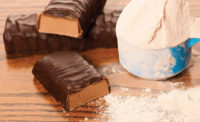If it seems as though what’s not in a product these days is as important as what is—you’re not imagining things. The insistence on “clean” and “simple” ingredients that began with a fringe of vigilant label readers has pervaded the marketplace.
In the mid-2000s, the movement began gaining momentum, recalls Mel Festejo, COO, American Key Food Products, Closter, NJ. He points to the decision among two major U.K. retailers to publish lists of unwelcome ingredients by 2007 as a turning point—and Whole Foods Market released its list in the U.S. soon thereafter, cementing its reputation as a leader in the American clean-label movement
“Today more than half of all U.S. consumers read food ingredient labels ‘often or always,’” notes Steven Gumeny, regional product manager, North America, Beneo, Parsippany, NJ, citing data from the 2018 “Global Trend Study” from HealthFocus International. “This increased awareness, as well as easy access to information about food ingredients, is driving the train when it comes to the clean-label trend. Selecting clean, transparent, and recognizable ingredients for product formulations will become increasingly important.”
According to HealthFocus International’s 2019 global “Clean Conscience Eating” report, “The macro trend of eating clean has morphed into what the research firm dubbed ‘clean-conscience eating,’” says Pam Stauffer, global marketing programs manager, Cargill, Minneapolis, “encompassing health, transparency, safety, avoidance of negatives—even environmental impact.”
Elena Taylor, senior director, wet ingredients category, Dawn Foods, Jackson, MI, notes that today’s take on clean is a form of “enlightened eating,” roping in preferences for organic, non-GMO, gluten-free, and allergen-free foods, all of which she believes fit consumers’ clean values. “Ethical and ‘green’ products are also preferences that extend beyond merely clean labels. Millennials lead in this space, as they specifically want to know that the companies they buy from are committed to doing business ethically and sustainably.”
Jennifer Stephens, vice president of marketing, Fiberstar, Inc., River Falls, WI, sees shades of clean in consumers’ embrace of plant-based lifestyles. “In the U.S., there’s been an uptick in bakers requesting egg and butter replacements. In other parts of the world, this happens for cost savings, but in the U.S. it’s to create animal-free bakery products.”
And Stephens has her eye on “whole-foods formulating,” which, for grain-based food producers, could mean using more whole-grain ingredients.
“Today’s clean label is about providing simplicity, clarity and trust,” says Stauffer. “On the formulating side, that means using familiar ingredients, fewer ingredients, and ingredients perceived as ‘healthier.’ But it doesn’t end there: What’s behind the label matters, too. We now see demand for greater transparency and traceability pushing clean-label concepts throughout the supply chain.”
Know your audience
Not all bakery and snack items are subject to the same rules. When in the market for convenience or indulgence, many consumers see fit to set clean concerns aside.
“Products known for being industrially made and not particularly nutritious—white pan bread, cookies, sheet cakes, tortillas, etc.—tend to get more slack from consumers on the ingredients listed on their labels,” says Elena De La Peña, Ph.D., business scientist, manager, bakery and snack team, global applications, Ingredion Incorporated, Westchester, IL. “On the other hand, products marketed under an artisan, handmade, or homemade halo are expected to be clean.”
Similarly, products parents buy for their kids, as well as classically “healthful” snacks like granola clusters and bars, face higher standards for clean content.
“If a business communicates that its food skews clean-label, organic, vegan, or otherwise, consumers would likely expect that most or all of the items within bakery will be clean,” says Taylor.
This one reason why snack and bakery manufacturers need to understand their customers’ priorities before reformulating, advises Matt Gennrich, senior food technologist, R&D bakery applications, Cargill. “Equally important, the product must meet consumers’ expectations for taste and texture while at the same time working within manufacturers’ shelf life and processing realities. It’s a delicate balancing act, but a knowledgeable supplier can help bakers successfully navigate the process.”
Preserving functionality
What makes that balance so tricky to strike is that doing so often means battling food chemistry itself.
For example, much-maligned emulsifiers like mono- and diglycerides do yeoman’s work enhancing volume, softening texture, and creating a uniform crumb structure in breads and cakes. “Removing emulsifiers from a formulation results in a product more prone to developing holes, an open crumb structure, lower volume, and firmer texture,” says De La Peña.
Similarly, dough conditioners like DATEM strengthen a dough’s gluten network during mix and help increase volume in breads and pizza crusts. Removing them introduces variability in finished-product quality, reduces final volume, and allows for a more-open crumb structure.
Clean consumers are quick to condemn preservatives, to but probably appreciate the limited microbial growth, increased shelf life, and safety assurance the ingredients bring.
And modified starches perform a host of functions that add up to better snacks and baked goods. “In fillings,” Gumeny explains, “texture and stability often come from chemically modified starch, which can withstand conditions like the high shear used to make a cream filling, or the high acidity in fruit fillings.”
In cakes, muffins, and cookies, modified starches do everything from managing moisture and maintaining texture to modulating batter viscosity for better batch-to-batch consistency, homogenous dispersion of inclusions and even expansion during bake. Replace them with less-functional alternatives, De La Peña warns, and you may lose moisture, hasten staling, compromise shelf life, and wind up with blueberries clumped at the bottom of your oddly shaped cookies.
But going clean-label doesn’t always mean a drop in quality. “Consumers don’t have to settle for suboptimal,” Taylor says. “Most ingredients perceived as ‘unclean’ now have ‘clean’ alternatives. And as clean-ingredient technology grows more accessible, barriers to developing products in this space will decrease even more.”
In fact, says Festejo, some in clean snacks and bakery are even “rediscovering the wealth of ingredients in nature that they’d heretofore ignored.”
Exhibit A: native starches. “Native starches derived from sources like corn, wheat, potato, rice, and tapioca are ingredients consumers understand, can find in their supermarket and might even have in their own kitchens,” Gennrich notes. “We’ve learned how these basic starches successfully fulfill many product requirements, including thickening, texturizing, stabilizing, retaining moisture, gelling, binding dough, and more.”
Gumeny notes that functional native rice starches help with shelf stability, freeze/thaw stability, and a delicate texture in snacks and baked goods. Made using a novel thermal process that he describes as “entirely natural,” the available rice starches withstand harsh processing conditions and perform on par with their chemically modified cousins.
Gumeny recommends using native waxy rice starch to prevent breakage in snacks and crackers, while praising blends of rice starch and flour as “gold standard” replacements for gluten and modified starch in breads, rolls, and pizza crusts. He notes that Beneo’s technology center has developed a pizza crust using a combination of rice starch and flour that reduced the total number of ingredients by more than 30 percent.
Festejo notes that American Key Food Products has deployed its specially milled Kumamoto superfine rice flours to bring down the ingredient tally in “challenging” gluten-free bakery applications, like white sandwich loaves and hamburger rolls. And the company’s premium cassava flour has made a name for itself in grain-free snacks and baking, including tortillas and tortilla chips. “Our cassava dough blend—a blend of cassava starches—works best in Brazilian cheese bread, cassava breadsticks, and cassava flatbreads and pizza crusts.”
Bakers are often on the hunt for clean alternatives to mono- and diglyceride emulsifiers, as well as lecithin made from soy, an allergen. Brock Lundberg, Ph.D., president, R&D, Fiberstar, offers his company’s Citri-Fi natural citrus fiber as a solution. It retains moisture, improves emulsification, and stabilizes water and oil, even under tough formulation, processing, and storage conditions. The ingredient’s high surface area and constituent proteins “bind significant amounts of water and oil to maintain taste, quality and overall cost,” he says—even at use levels below 1 percent. “In this case, less is more.”
Used at 0.5 percent of a bread formulation along with 2.5 percent additional water, Lundberg says, the citrus fiber helps maintain manageable dough viscosity, while the additional moisture contributed to improved freshness over time, adding that the ingredient improves strength, maintains freshness and pliability, and reduces breakage in chips, crisps, puffs, pretzels, crackers, and other friable snacks.
For bakers who want to keep using lecithin—just without the soy—Cargill offers soy-free versions made from sunflower and canola, which Gennrich said perform comparably to soy. “In breads, we’ve found that our lecithin, used with enzymes, enables bakers to remove legacy emulsifiers such as DATEM and mono- and diglycerides,” he said.
And while some manufacturers wish to avoid soy, others praise it as a cleaner alternative to partially hydrogenated oils (PHOs). Per Frank Flider, consultant, Qualisoy Oils, Chesterfield, MO, “The food industry has successfully removed PHOs from the food supply and replaced them with oils having greatly improved nutritional profiles and no detrimental effects on eating qualities, health, or stability.”
High-oleic soybean oil—a widely acknowledged “healthy” fatty acid—is more resistant to oxidation than standard soybean oil, making it a functional fit in packaged snacks and baked goods, says Flider. Because of its inherently superior stability, high-oleic soybean oil and shortenings don’t require the antioxidants, synthetic or natural, which are often added to other edible oils to control oxidation.
“The development of alternative products such as non-GMO high-oleic soybeans is currently underway, addressing consumer desires for such products and giving food producers choices,” says Flider.
What’s in store
While the industry has made much clean progress, it still has a long way to go.
“Certain areas are still without acceptable solutions,” Gennrich said. “Aerating emulsifiers are a prime example. In these instances, there may be need for a recalibration of consumer expectations—at least until we find viable alternatives.”
In some cases, economies of scale have yet to kick in, putting clean ingredients at a cost disadvantage. “But as long as sustained growth of the clean-label trend helps demand last,” Festejo said, “costs will improve, and consumers’ quality expectation will be met without compromise.”
Taylor foresees corporate responsibility becoming a factor, noting that it’s transitioning from a premium to a baseline consumer expectation. “As part of this, consumers are becoming more aware of how food waste, production, and sourcing impact climate change. This has driven businesses to focus on practices like zero-waste and sharing the processes used to prepare foods.” Dawn Foods has made its packages reusable and recyclable, and is in the process of identifying all greenhouse gas emission sources to reduce or even eliminate as many as possible. Clean label can also mean fostering a cleaner environment.
So where does this all lead? “In the end,” Stephens wagers, “foods will be evaluated as a whole on whether they’re clean or not. This will entail ingredients, manufacturing, packaging, and transport.”










